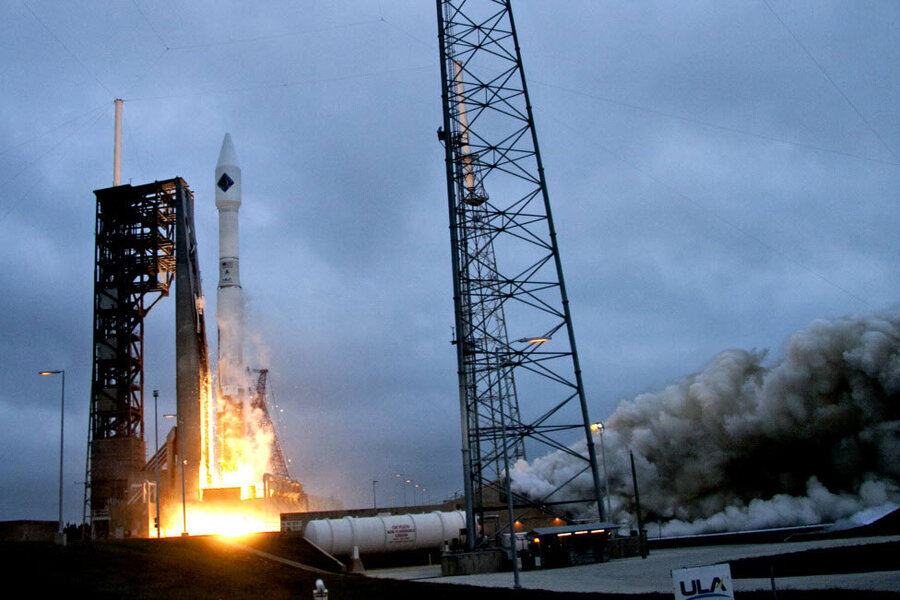Commercial space travel is booming at NASA spaceport
Loading...
It’s going to be a jam-packed year at NASA’s spacesport in Cape Canaveral, Fla.
As more and more companies enter the commercial market of space exploration, the Florida rocket launch site is filling up with scheduled lift-offs. Private space companies like SpaceX and United Launch Alliance have planned more than 30 launches from Florida this year, nearly doubling their number of launches since last year.
The private companies will also be joined by the US military, International Space Station cargo ships, and a NASA asteroid sample mission. The Cape Canaveral Air Force Station, just south of NASA's flight center, will be utilized by ULA, the joint venture of Boeing Corporation and Lockheed Martin, and SpaceX, which recently succeeded in recovering the booster rocket used in a December launch.
"We want to be able to fly every week, for sure, if not multiple times in a week," SpaceX President Gwynne Shotwell said at a commercial space conference in Washington, D.C., Wednesday.
Blue Origin, the brainchild of Amazon founder Jeff Bezos, is another company expected to enter the aerospace field in the next few years, as a November test launch also returned the booster to ground, intact.
As The Christian Science Monitor’s Pete Spotts reported last year, these private companies have been able to achieve what NASA never could – make space travel more affordable by reusing rockets. He explains:
NASA's space shuttle program was an initial attempt at developing a fleet of reusable vehicles for human spaceflight, as well as for launching and servicing satellites. But over its 30-year history, it never delivered on its architects’ initial promises.
Initial estimates suggested that each flight would cost as little as $9 million and the cost of carrying cargo would be $118 per pound. By the end of the program, each flight cost about $1.5 billion, and cargo cost about $10,000 per pound.
Now, privately-owned aerospace companies owned by wealthy visionaries are taking up the challenge, free of Wall Street demands for quick returns on investment or of the intense scrutiny of annual federal budget cycles.
According to a report last year by the Satellite Industry Association, the private industry of space launch services generated global revenues of $5.9 billion in 2014. All the while, the market continues to expand.
"The last time we saw 30-plus launches would have been back in the 1960s," business strategist Dale Ketcham with the Space Florida economic development agency told Reuters.
At Cape Canaveral, the first launch of the year will take place Friday: ULA is blasting off its Atlas 5 rocket to place a Global Positioning System satellite, built by Boeing, into orbit for the Air Force.
This report contains material from Reuters.








